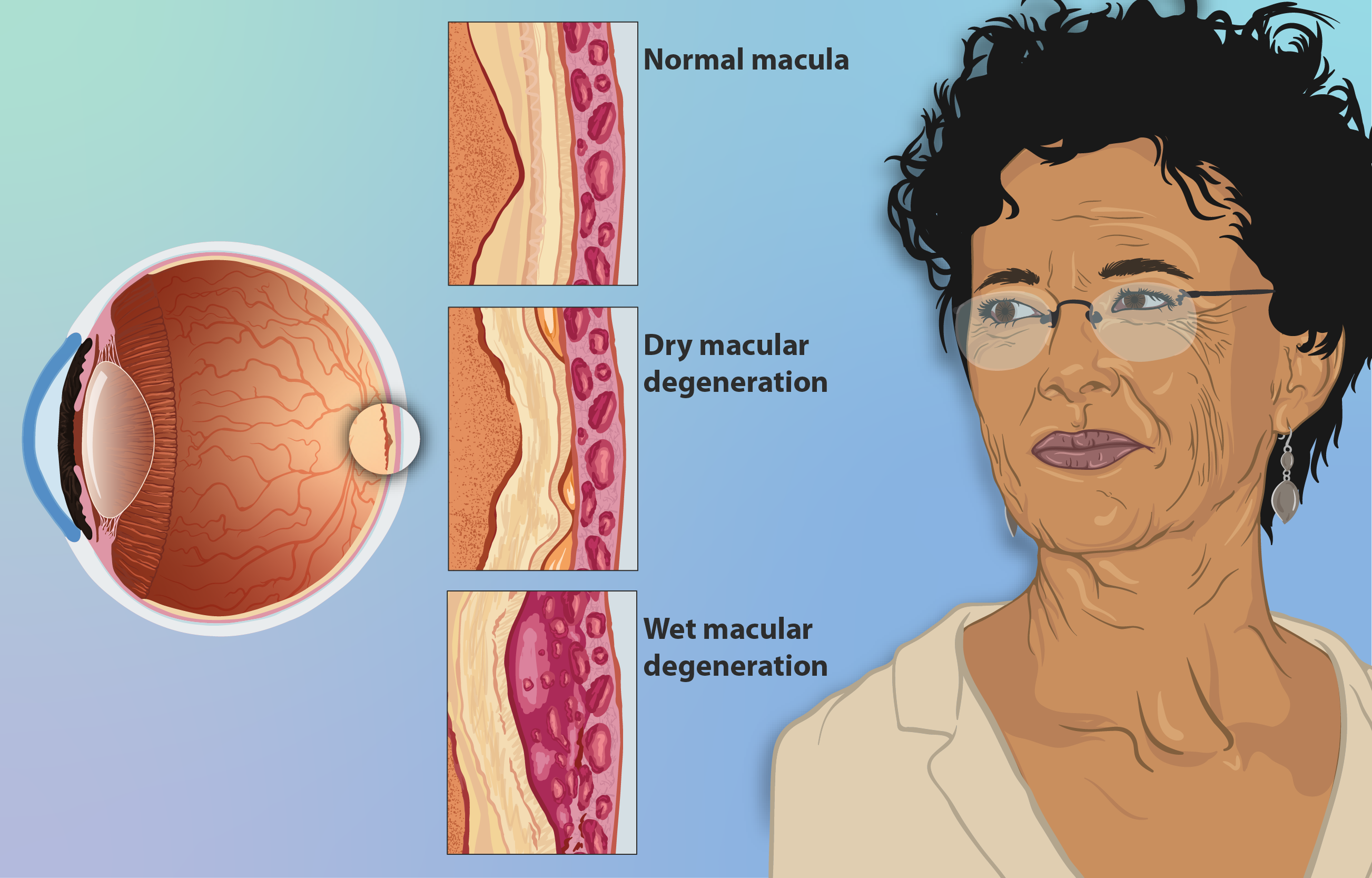Around 20 million Americans live with some form of age-related macular degeneration (AMD), making it the leading cause of vision loss globally. For individuals affected, this condition significantly disrupts their daily lives, particularly tasks that require sharp central vision, such as reading, driving, or recognizing faces. Here is information on how AMD occurs, the types of this condition, and the treatments available to manage it effectively:
How Does Macular Degeneration Occur?
As the body ages, organs and bodily functions slow down, including those of the eyes. Macular degeneration primarily affects the central vision, making it harder to focus directly in front of you. This occurs due to changes in the retina, the delicate layer of tissue at the back of the eye.
Age, along with a combination of genetic, environmental, and lifestyle factors, can trigger the deterioration of the retina’s key structures. While the precise causes may vary, AMD typically occurs due to:
- Age: Most common in individuals 50 years or older.
- Genetics: Family history of AMD increases the risk.
- Lifestyle Choices: Smoking, poor diet, and prolonged UV exposure can contribute.
- Medical Conditions: High blood pressure or heart disease may increase susceptibility.
What in the Eye Is Impacted by AMD?
The macula is the central portion of the retina responsible for detailed and sharp vision. Everyday activities, like reading fine print or recognizing the faces of loved ones, depend on a healthy macula. Damage to this concentrated area is what causes the hallmark central vision loss in macular degeneration.
The retina, a thin layer of light-sensitive tissue at the back of the eye, is where light is converted into electrical signals. These signals are then carried to the brain via the optic nerve, allowing us to see. When the retina deteriorates due to AMD, this precise and complex process is disrupted, leading to blurred or reduced vision.
What Types of AMD Are There?
Macular degeneration manifests in two key forms, which differ in severity and progression:
- Dry Macular Degeneration: Dry AMD is the more common and less severe form, accounting for 90% of AMD cases. It develops gradually when the macula thins with age and accumulates small protein clumps known as drusen. Though vision loss occurs slowly, untreated dry AMD can progress to its wet counterpart.
- Wet Macular Degeneration: Wet AMD is less common but more severe. This occurs when abnormal blood vessels grow beneath the retina. These vessels are fragile and often leak blood or fluid, leading to rapid loss of central vision. Immediate medical attention is key for anyone diagnosed with wet AMD.
What Treatment Options Are There?
While AMD cannot be cured, various treatments help slow its progression and help people manage their condition. Many treatment options can be used at the same time, depending on the type of AMD. Together, these options work to manage AMD symptoms effectively. Some common treatment options are:
Home Monitoring Devices
Patients with AMD benefit from using home monitoring devices, such as the Amsler grid test. These tools help track any changes in vision, enabling early detection of worsening symptoms. Self-monitoring helps patients track their condition and receive timely medical evaluation.
Laser Therapy
Laser therapy is often used in cases of wet macular degeneration. This treatment employs a high-energy light beam to target and seal leaking blood vessels beneath the retina. By controlling the damage, laser therapy helps preserve existing vision and prevent further deterioration.
Photodynamic Therapy
This therapy involves injecting a light-sensitive drug into the bloodstream, which is then activated by shining a laser beam on the affected area. This helps close off abnormal blood vessels and slow down vision loss. Photodynamic therapy is usually recommended for patients with early-stage macular degeneration.
Learn More About Macular Degeneration
AMD requires appropriate care and attention to manage its impact on daily life. From understanding its causes to recognizing symptoms and exploring treatment options, being informed is a key step to safeguarding your vision. If you suspect AMD or want to learn more about maintaining optimal eye health, consult a trusted eye care professional today. Taking proactive steps now can help you preserve your vision for the future.
- Preparing for Thyroid Surgery and Understanding the Recovery Process
- Understanding the Connection Between Depression and Chronic Illness
- The Role of Preventive Care in Federal Dental Coverage
- Natural Supplements for Hemorrhoid Relief
- How an Optometrist Can Help with Presbyopia and Age-Related Vision Changes


Leave a Reply